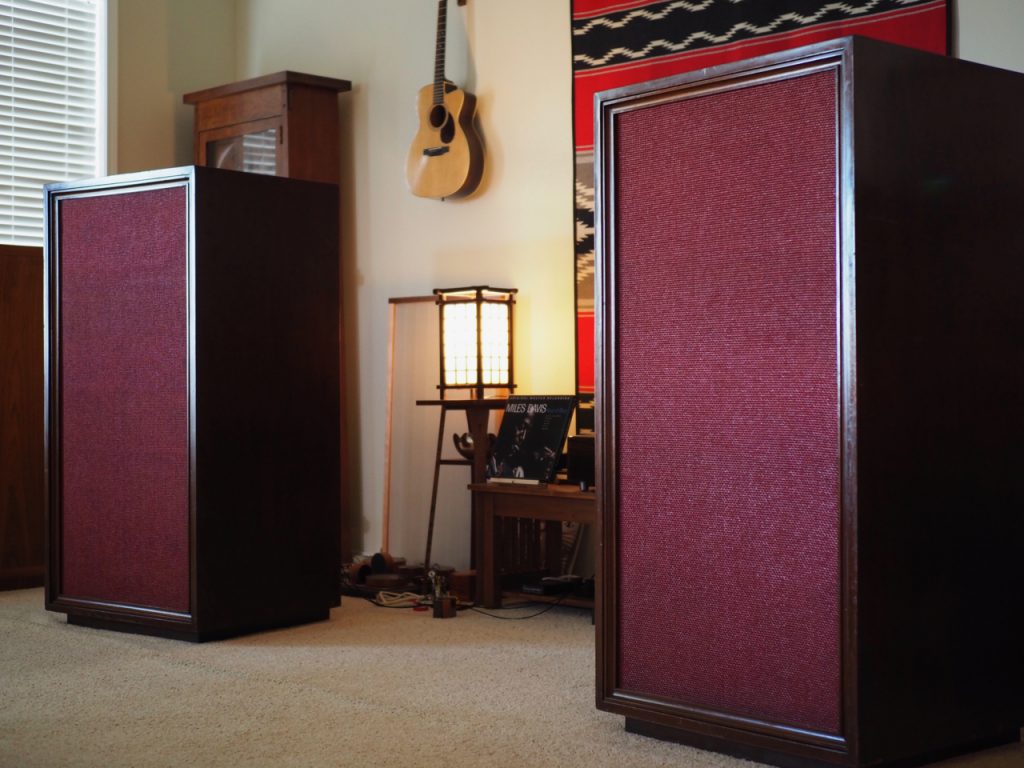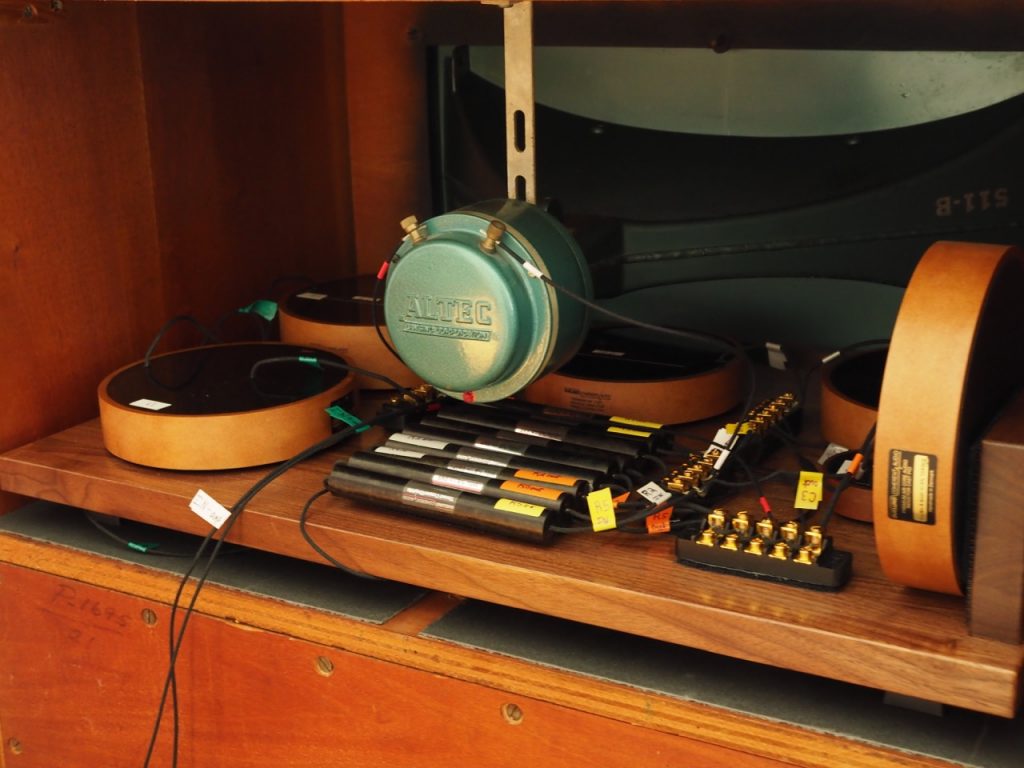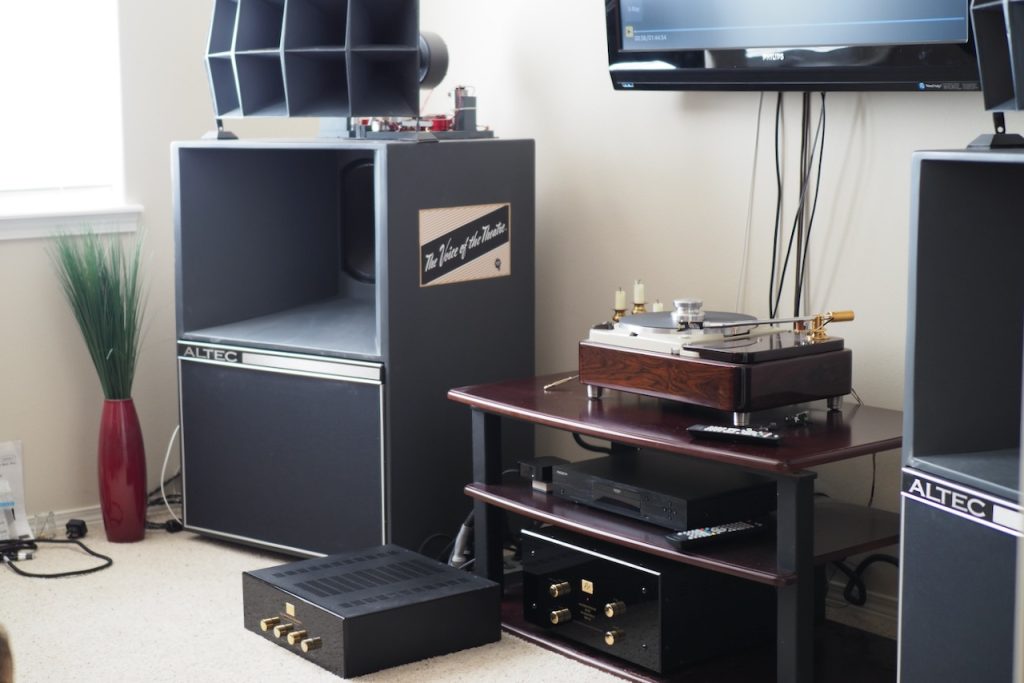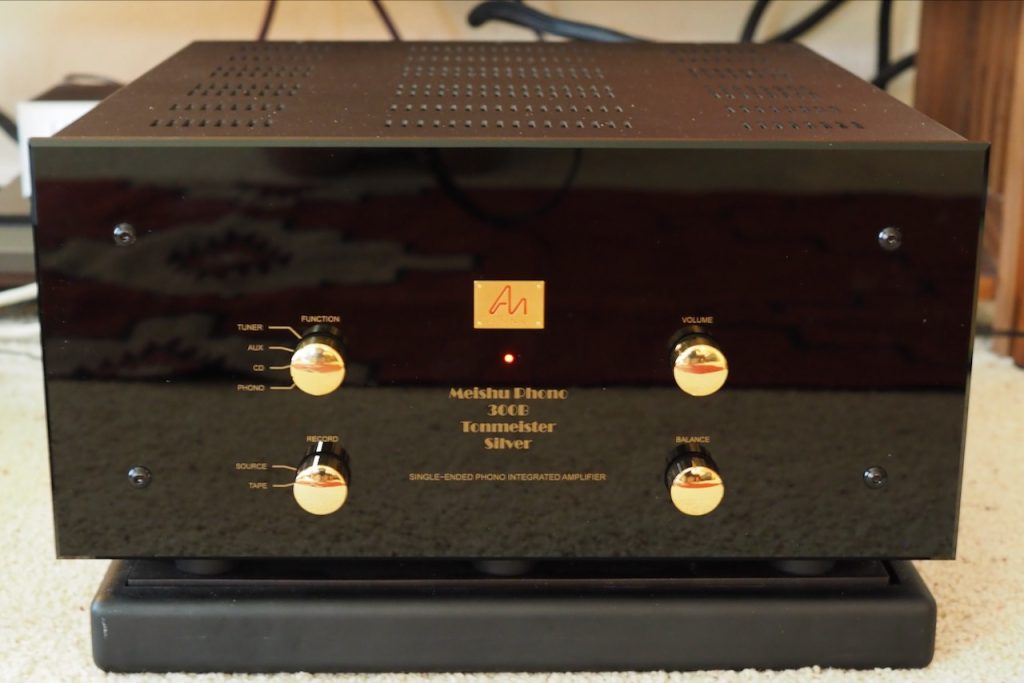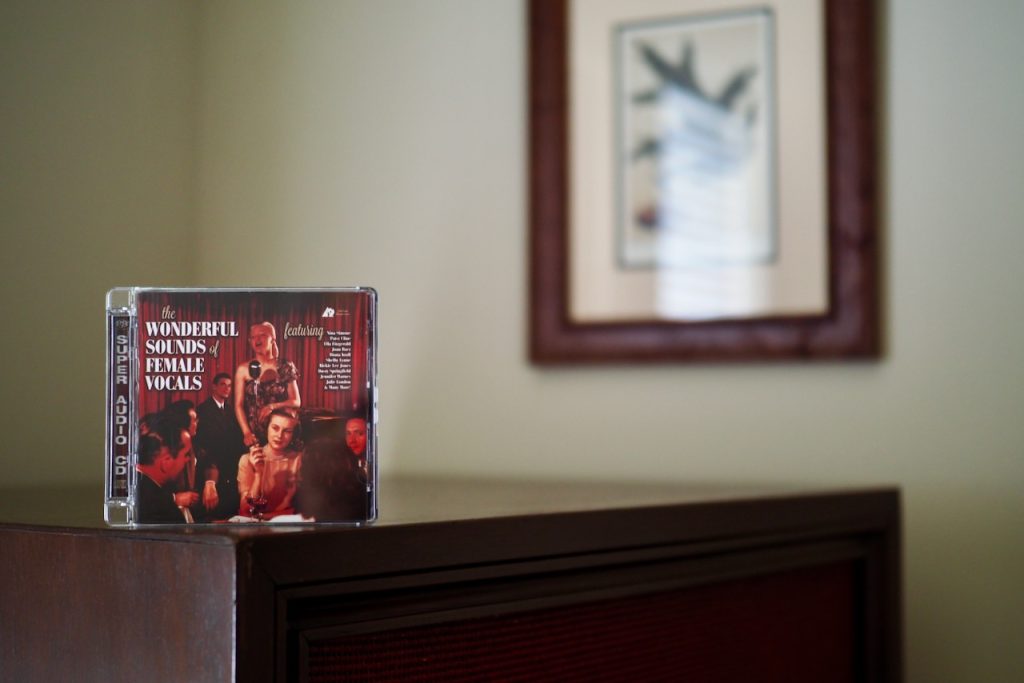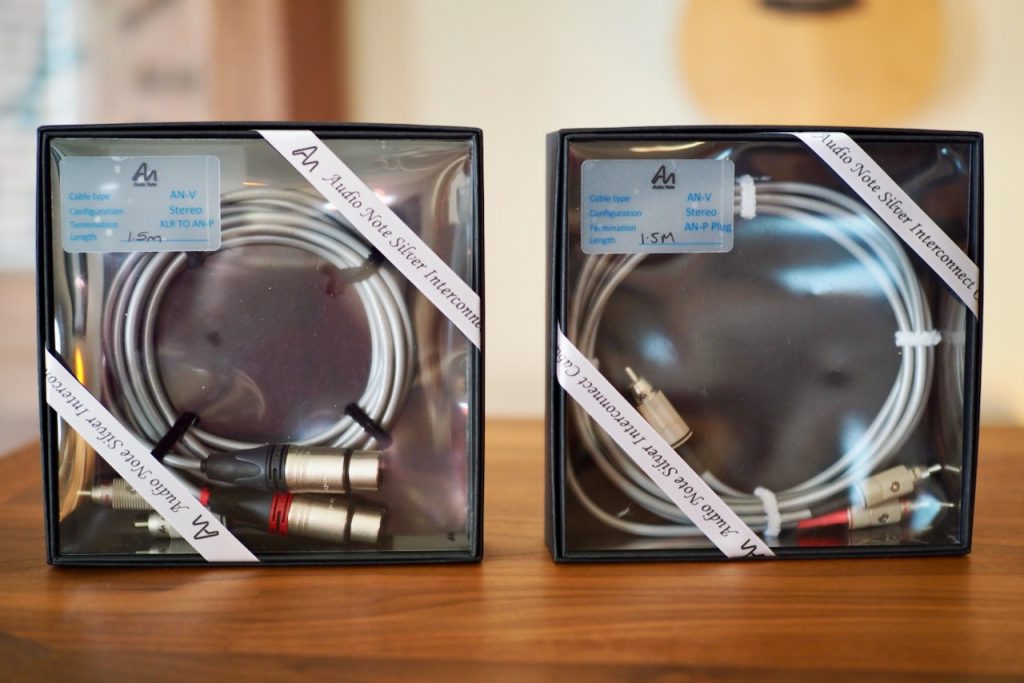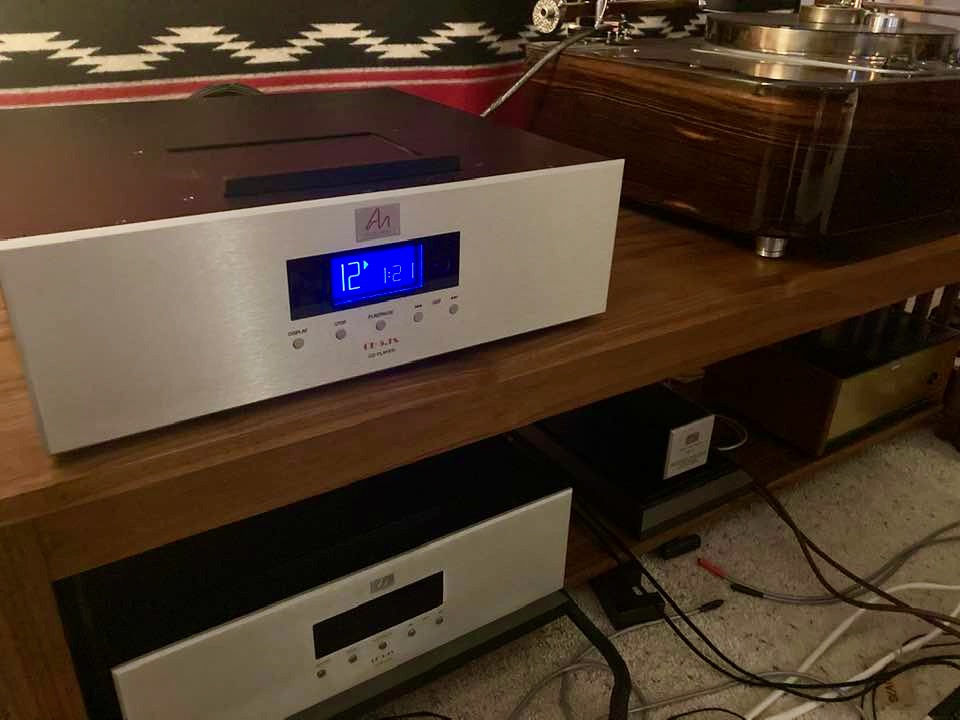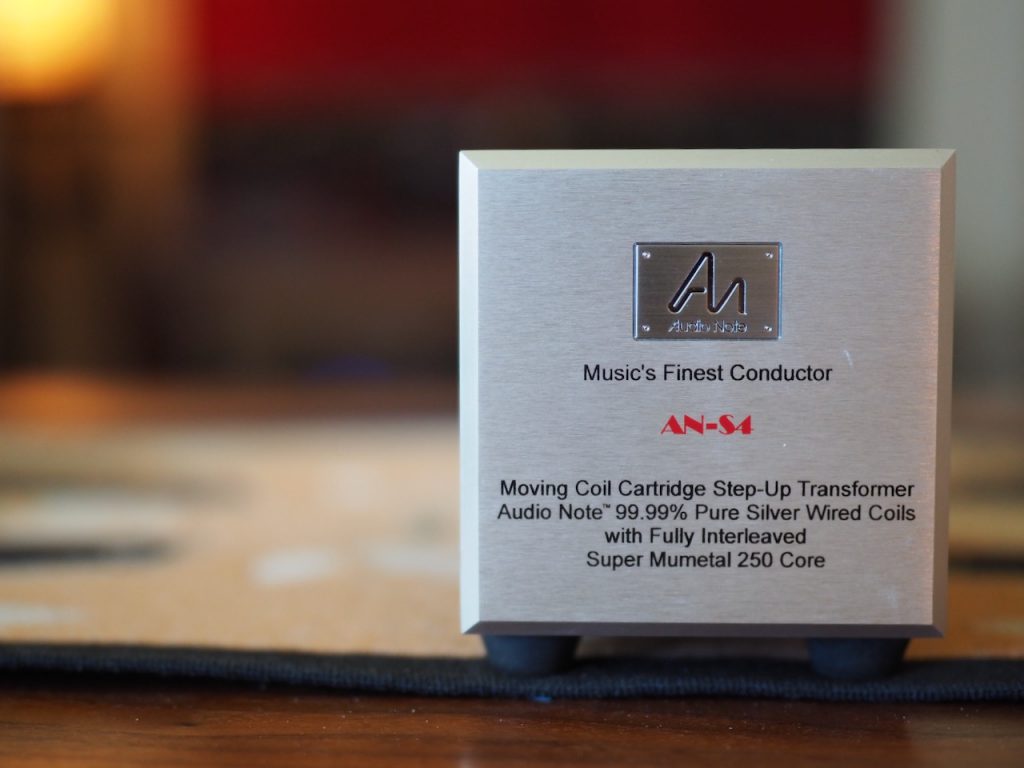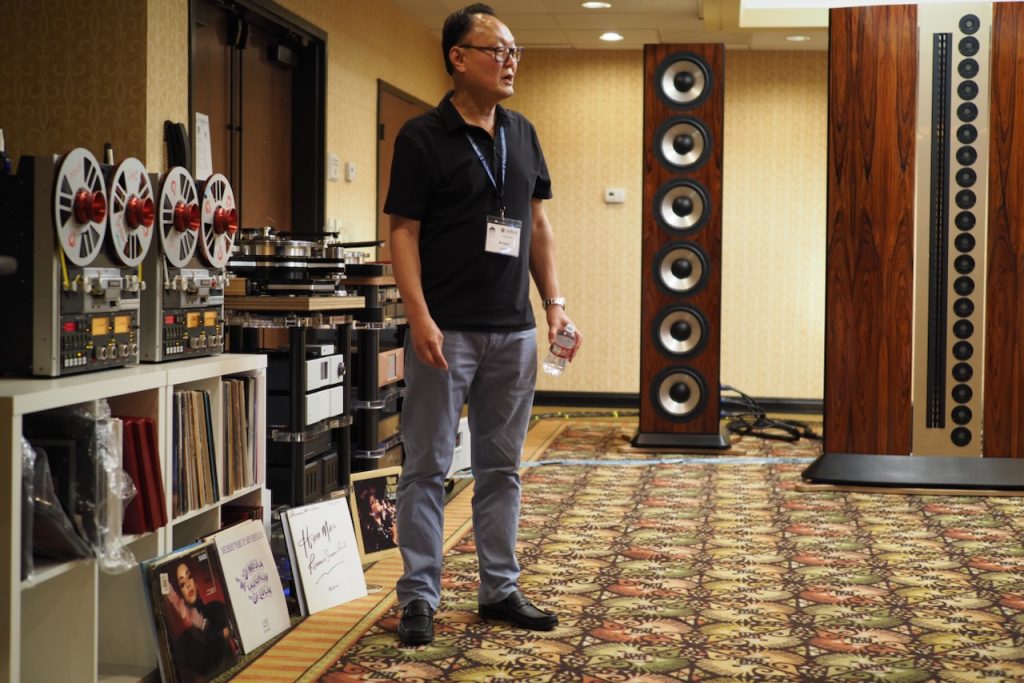Greetings friends, I hope you are doing well!
I've been enjoying the improving springtime weather here. Like the last few years, this could to turn out to be an extra-hot year, as we were within 1 degree of the hottest temperature on record here for this time of year just a few days ago.
That prompted me to get the late Dr. Stokowski's Altec loudspeakers out of storage and moved into my home, as I didn't want to expose them to the hot temperatures that are sure to come this summer. We hit 112F last year, and I suspect this year will be much the same.
The photo above is of the Altecs in my living room, but I moved them into my smaller office & guitar room in room boundary positions. Supposedly not an optimum room for the big Altecs, as it's a smaller room, but they work remarkably well in there, and that was without optimizing the Duelund CAST tinned-copper crossovers for the room like I did for my Altec A5 Voice of the Theatre loudspeakers in their room.
When I tried the Meishu 300B in my audio-visual system with my vintage Altec A5 Voice of the Theatre loudspeakers (below), I was stunned at how good it sounded, and in fact the Meishu sounded better than any amplifier I've ever had in my A5 system. Its that Altec - 300B synergy.
Well, the same sort of thing happened when I tried the Meishu with the Stokowski Altecs. The sheer musicality I was hearing from the Altec - Meishu combination pretty much blew me away, and that was with my regular ol’ Superscope PSD340 Music Practice CD recording system as a source (long out of production) that I use occasionally when practicing the guitar.
Duelund DCA16GA speaker cables, Belden 8402 microphone cable interconnects, and Sablon Audio power cords rounded out the cables side of things.
Altecs are favorably complimented by 300B amplification, and for good reason, it's a classic combination from the dawn of audio that were quite literally meant for each other. Synergy.
It didn't hurt that I was listening to The Wonderful Sounds of Female Vocals from Chad Kassem's Analogue Productions record label. This is a two album set that is as 'wonderful' on CD as it is on vinyl. If you haven't got a copy yet, you'll definitely want to add it to your music library.
I'm a big fan of Chad's Analogue Productions record label, for my tastes Chad gets my favorite combination of high-fidelity sound quality combined with an engaging natural musicality.
Something remarkable happens with the big Altecs in smaller rooms, particularly with the 300B Meishu, and the uber quality of The Wonderful Sounds of Female Vocals album didn't hurt one bit.

Vespers martini: 2 parts Lillet Blanc, 1 part Ketel One vodka, and 1 part Bombay Sapphire gin, shaken over ice, with a twist of lemon peel.
You've no doubt heard about wine pairing. That's where you match a particular wine with a particular food course, which makes the flavor of both "pop", with the sum of flavors being greater than the parts.
The same works for spirits and music combinations. In honor of the great music and great sound quality I was listening to, I mixed up a Vespers Martini, which seemed to be just the right drink to go with this music, and voilà a magic music and drink pairing!
Rye whiskey goes great with blues, bourbon with the Rolling Stones, a good martini is hard to beat with female vocals, and single malts really compliment opera. I'm kidding, but only sort of.
Back to the big Altecs and small room thing. You'll hear guys say that combination can't work, bad juju and all that. It does work, if you optimize the crossovers for the room and the room boundary positioning, and sometimes even if you don't. In fact, particularly with the 300B Meishu, something remarkable happens with the big Altecs in a smaller room.
That holy trinity of presence, dynamics, and natural tone combines to produce an almost religious like ecstasy of music listening that you sometimes experience in those grand old cathedrals. The ambience of the recording suffuses the room, creating an astonishingly immersive effect where the listener is placed within the sound and 'feel' of the music.
Even more notably, the level of feelings experienced from the music becomes increased in a heavenly sort of way, where you can feel every overtone, every tone color, every breath of the vocalist, and that was before I started sipping the Vespers!
You get the drift, there's something special that happens with the highly-sensitive Altec loudspeakers and 300B SET amplification.
Ok, back out to my main music listening system with my Tannoy Westminster Royal SE loudspeakers. The Altecs are dreamy and luxurious to listen to, but the West's better them in coherence due to the dual concentric Tannoy drivers.
The Duelund CAST pure silver components in the mid & high-frequency circuits of the West's crossovers recover a remarkable amount of nuance, and when combined with the Triode Lab 45 EVO SET integrated amplifier they present the music in an utterly natural and live-like fashion.
Remember the wine & food pairing, and spirits & music pairing concept? Well, part of the reason I brought up the whole 'pairing' idea is that there are some amplification & loudspeaker pairings that elevate the whole music listening experience to another level.
The Altecs & 300B Meishu are one example, and the West's & 45 EVO are another. Those combinations of loudspeakers & amplification are extremely complimentary to each other.
I've been listening to the remarkably high-fidelity Audio Note (UK) CD 5.1x and 4.1x CD players, and breaking in the AN-V silver interconnects recommended for them by Darko Greguras.
Darko told me things start to come together at around the 200 hour mark for the AN-Vs.
For fun I've been buying copies of both CDs and LPs of albums to do some comparative listening using the same music.
The idea is to compare the CD 4.1x and CD 5.1x to each other, and to the formidable combination of the Audio Note (UK) Io I moving coil phono cartridge and silver AN-S4 SUT combination.
The performance strengths and weaknesses vary across the two formats, so one can't do an exact apples-to-apples comparison, but still comparing the two formats is illuminating and fun.
Excerpt from an earlier post:
"Is digital superior to analog? Yes and no. Is analog superior to digital? Yes and no."
"Classical music lovers - like the late and great J. Gordon Holt of Stereophile fame - might prefer CDs for their 90 dB dynamic range (vinyl is 55 to 70 dB), which means less dynamic compression (and the possibility for none), and their up to 80 minute playing time, which enables listening to a full concert uninterrupted (where vinyl is an interrupted 45 minutes over two sides)."
"There is also less surface noise from CDs than vinyl, and they don't wear after repeated playing like vinyl. A CD collection also takes up less space than a vinyl collection, so you can get a bigger music library into the same amount of space."
"Vinyl aficionados will point out that the frequency range of vinyl is potentially 7 Hz to 50KHz (but more likely the lower end is 20 to 30 Hz), and vinyl high-frequencies handily exceeds that of CD (CDs top out at 22.5KHz). That potentially delivers more openness, more spaciousness, and more soundstage depth, for vinyl."
"Recording engineers are saying that for recording purposes, the signal that goes from the microphone to the recorder, and the signal you get back from the recorder, is more accurate for digital than it is for analog."
"They also say today's best digital transfers from analog master tapes are indistinguishable from each other in sound quality. They also say that masters transferred to CDs are much closer to the original master recordings than those transferred to LPs, which will typically require more dynamic compression."
"Personally, I enjoy both digital and analog formats, and when each type of format is optimized during mastering specifically for a CD, or a vinyl record, you can bring the strengths of each type of media to the software, and the end result is that they are both very, very, high-fidelity, but perhaps just in slightly different ways."
"It turns out that both analog and digital playback software (vinyl and CD) and playback components have evolved to a point where they can offer very high-fidelity presentations from recorded music."
So you get the idea, both CDs and LPs can sound very good indeed with the right source components.
Well, I've blathered on long enough for now, so its time to get back to some music listening.
I'll have more to tell you about Audio Note (UK) CD 5.1x Red Book CD player as I get the AN-V interconnects up to their recommended run-in hours, and perhaps a few brief listening impressions before then.
As always, thanks for stopping by, and may the tone be with you!




